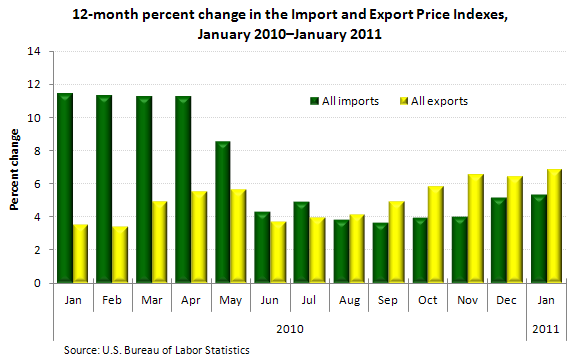Prices of Both Imports and Exports Rise
Next time you meet someone from another country, and you are looking for common ground for a conversation, try kvetching about the price of imports. The price of imported products went up all over the world during the past fiscal year.
Shopkeepers struggling to stay in business surely aren’t the cause for these high prices. Most of the hikes in cost are attributed to the spiking costs of fuel and non-fuel.
Over the 12-month period from January 2010 to January 2011, import prices increased 5.3 percent, the largest 12-month advance for the index since an 8.5-percent rise in May 2010. An example of the larger costs of production and delivery is the price of fuel which advanced 12.4 percent over the year, led by a 14.3-percent increase in petroleum prices.
Overall, Americans charged foreign markets 6.8 percent more for their products. The 12-month increase in January was the largest year-over-year advance since a 7.0-percent increase between September 2007 and September 2008.
The international community faced a huge 22.6 percent spike in the cost of buying American agricultural exports. Nonagricultural prices rose 5.3 percent over that 12-month period, led mostly by a 13.9-percent advance in the price index for nonagricultural industrial supplies and materials.
In some ways, it can feel like the world is shrinking, as one can so easily learn about places around the world, However, the near future may experience some changes in the way that international trade functions as countries everywhere face rising costs of importing goods.
How might these shifts in the costs of imported goods play out within the field that you work?


